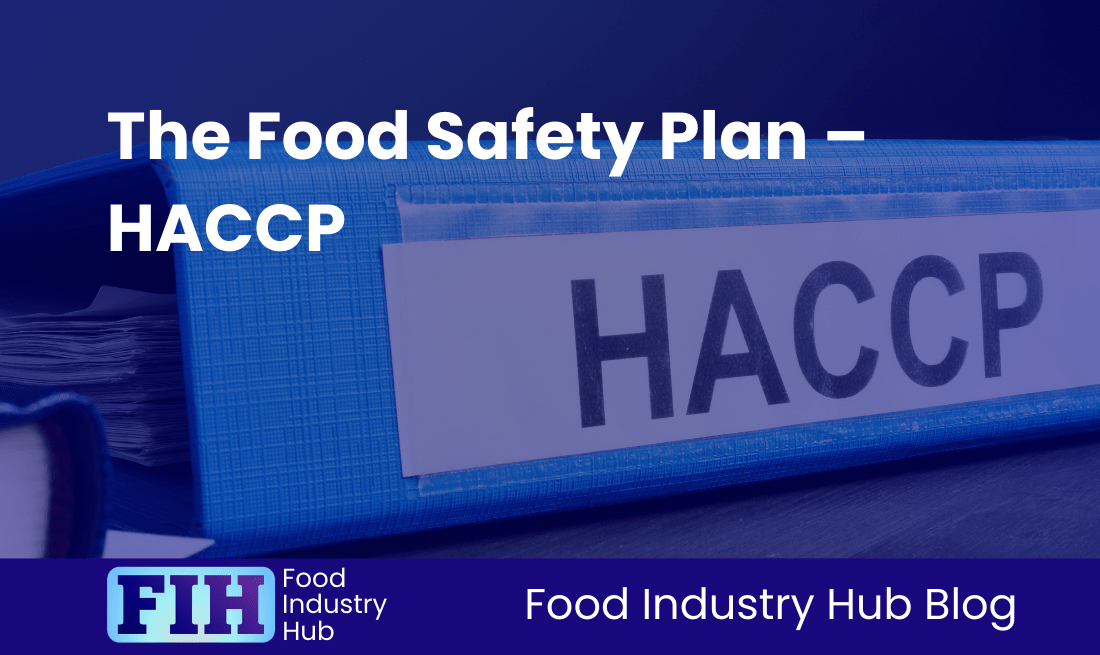Know: Decision Trees for Risk Management
Contents
Introduction
Key Takeaways
Understanding the Basics of Decision Trees in Food Safety
Risk Assessment Methodologies Incorporated in Decision Trees
Authenticity Verification Applications of Decision Trees
Challenges in Implementing Decision Trees
Technological Innovations in Decision Trees
Navigating Regional Regulatory Considerations
Strategies for Holistic Integration of Decision Trees
Conclusion
Introduction
Decision trees are a fundamental component of risk management in the food manufacturing industry, playing a vital role in enhancing food safety and quality, ensuring regulatory compliance, and affirming product authenticity. As systematic tools, they guide professionals through a series of logical queries, evaluating potential hazards at every stage of production. This meticulous approach finds specific significance in Hazard Analysis and Critical Control Points (HACCP) systems where identifying Critical Control Points (CCPs) is necessary to manage food safety risks.
Decision trees are not only about achieving compliance; they aid in shaping a culture of proactive risk management within organisations. By offering clear insights into risk pathways, food manufacturers can make knowledgeable decisions enabling swift responses to potential concerns. Pre-emptive measures protect consumer health and fulfil market demands in an industry where quality, legality, and authenticity are non-negotiable. Therefore, decision trees are an invaluable tool in preserving trust and ensuring product integrity.
In this article, we will discuss several significant concepts associated with the use of decision trees in risk management. Specific areas of attention include the core principles of decision trees, diverse risk assessment methodologies within their framework, and their use in authenticity verification. We will also consider the obstacles encountered during implementation, emerging technological innovations enhancing their usefulness, regional regulatory considerations affecting their application, and methods for comprehensive integration of decision trees into wider risk management practices. Equipped with this understanding, food manufacturing professionals can more effectively utilise decision trees to boost their operations and encourage robust compliance with safety norms.
Key Takeaways
Upon analysing the significant themes related to employing decision trees for risk management within the food manufacturing industry, we draw the following important conclusions:
Principles of Decision Trees
Decision trees prove their worth as structured visualisation tools that map decisions and their possible outcomes. The ability to demystify complicated choices and streamline decision-making processes is undeniably beneficial. By enabling a graphical evaluation of various risk scenarios, they steer stakeholders towards fitting mitigation strategies.
Risk Assessment Methodologies
Decision trees notably assist in probabilistic analysis, empowering food manufacturers to forecast outcomes grounded on different risks like contamination or supply chain volatility. Techniques such as Expected Monetary Value (EMV) become useful in pinpointing the most advantageous actions in harmony with overall risk management objectives.
Authenticity Verification
Another significant application of decision trees is their ability to systematically scrutinise the integrity of materials in food production. Ensuring accurate data formulation can improve the reliability of authenticity checks, ultimately fortifying brand reputation and consumer trust against issues like counterfeit or inadequate ingredients.
Implementation Challenges
However, implementing decision trees is not without its complications. The complexity of data, particularly when numerous variables are intertwined, can confuse the decision-making process. The successful integration of decision tree analysis within existing risk management frameworks entails meticulous planning and a shift in the organisation culture.
Technological Innovations
Technological advancements play a significant role in augmenting the utility of decision trees. Enhancements range from software that simplifies data entry and visual presentation to emerging technologies such as AI and machine learning to augment the prediction process. These tools can equip food manufacturers to respond in real-time to risk assessments, allowing for a more dynamic and responsive approach to industry changes.
Regional Regulatory Considerations
Attending to regional regulatory considerations is necessary when fashioning decision trees for risk management. A careful evaluation of local food safety standards is required to navigate varied compliance requirements across regions. Failure to meet these regulations could lead to considerable operational risk, emphasising the need to incorporate these dynamics into decision tree analysis.
Holistic Integration Strategies
Implementing holistic integration strategies is indispensable in creating a unified approach towards risk management. It is important to integrate decision trees with wider organisational strategies, ensuring risk assessments are interwoven with operational processes and quality control measures. A cross-departmental collaboration promotes comprehensive risk management, harmonising decision-making with the company’s larger goals.
By focusing on these themes, food manufacturing professionals can effectively make use of decision trees for an uplift in risk management practices and foster a progressive attitude towards emerging challenges and opportunities. Concepts such as Expected Monetary Value, authenticity verification procedures, and regulatory compliance frameworks are worth exploring in depth to better understand their implications within the context.
Food Industry Hub Management Systems can significantly boost the effectiveness of your food safety and quality management system, leading to improved confidence and elevated quality assurance throughout your operations.
Understanding the Basics of Decision Trees in Food Safety
In the field of food safety, decision trees hold a foundational role, notably within the Hazard Analysis and Critical Control Point (HACCP) system. This approach aids professionals by highlighting Critical Control Points (CCPs) in the food manufacturing process. Decision trees, which are usually represented as flowcharts, guide teams through a set of yes/no questions. This systematic approach enables careful hazard evaluation at each phase, helping users establish if preventative measures are required to control hazards and comply with food safety rules and standards.
Structure and Benefits of Decision Trees
Employing decision trees for food safety offers several advantages. They promote objective decision-making by relying on structured criteria derived from factual information, rather than subjective judgment. This objectivity reduces the risk of incorrectly classifying process steps, ensuring a consistent and reliable application of control measures across varying products and processes [Source: HSE Blog]. Additionally, decision trees support comprehensive documentation for each decision made in the hazard analysis phase, promoting accountability and traceability in your food safety efforts.
Integration into HACCP Frameworks
Incorporating decision trees into the HACCP system proves to be effective for the identification and management of CCPs. The decision tree allows teams to systematically assess whether a control measure is needed to address potential food safety hazards at each production step. This method improves the accuracy of hazard analysis and aids in defining clear critical limits and monitoring procedures for each identified CCP. Through this integration, food safety risks are effectively managed throughout the production cycle, ensuring compliance with relevant safety standards.
Different Types of Risks Addressed through Decision Trees
Decision trees effectively manage a variety of risk types within food safety:
- Microbiological Risks: These risks relate to harmful microorganisms like bacteria and viruses, which can contaminate food products. Decision trees help identify CCPs where factors such as cooking temperature and hygiene practices should be closely observed to control microbiological contamination.
- Chemical Risks: Potential contamination from cleaning agents, pesticides, and naturally occurring toxins fall under this category. Decision trees help determine when and how to implement chemical safety controls, including proper storage and usage practices, in order to substantially reduce these risks.
- Physical Risks: This refers to risks from foreign objects like metal fragments or glass shards that could pose harm to consumers. Decision trees guide towards the necessary control measures during processing and packaging phases where physical contamination could occur.
Key Concepts: Control Measure Effectiveness and Acceptable Risk Threshold
In a decision tree framework, understanding control measure effectiveness and the acceptable risk threshold is essential for upholding food safety.
Control Measure Effectiveness
Control measure effectiveness delimits how much a specific preventive measure can reduce or eradicate a hazard to a tolerable level. Evaluating this effectiveness within the decision tree framework is crucial to ascertain whether each production step qualifies as a CCP. A consistent and effective implementation of control measures is necessary for maintaining food safety standards.
Acceptable Risk Threshold
The term ‘acceptable risk threshold’ refers to the highest hazard level deemed as tolerable for consumer safety by regulatory guidelines. Decision trees aid in assessing whether risks at different production stages can be managed within this acceptable range. If a risk surpasses this level, the decision tree framework prompts professionals to implement additional controls or modifications to effectively mitigate those risks. This systematic evaluation ensures a thorough assessment of food safety practices, prioritising consumer health and safety.
Risk Assessment Methodologies Within Decision Trees
The Utilisation of the Multi-Factor Approach for Risk Profiling in Decision Trees
Decision trees are essential instruments within risk management, as they enable a multi-factor assessment of risks linked to finance, operations, and regulation. Within the structure of each tree, decision nodes represent potential choices, whereas chance nodes denote the uncertainties related to these choices, backed up by assigned probabilities. For food manufacturing organisations, this methodology offers a clear visualisation of complex decisions, accommodating the systematic evaluation of various scenarios, and promoting clear, informed decision-making. As an illustrative example, when deliberating on supplier contracts, a decision tree might combine assessments of supplier reliability, cost outcomes, and potential regulatory risks—thus offering a thorough assessment of outcomes and facilitating decision-making to enhance operational efficiency whilst minimising risk.
Resource Allocation & Optimisation Models in Risk Management
Within the context of decision trees, resource optimisation is about the efficient allocation of resources to reduce identified risks whilst maximising benefits. Decision trees facilitate the analysis of the expected monetary value of different allocation strategies. This enables stakeholders to balance the potential costs of investment against the projected outcomes. Consider a food manufacturing firm deciding whether to invest in machine upgrades or employee training. In this scenario, a decision tree could project the long-term implications and costs associated with each option. This suggests that utilising resource optimisation models within decision trees can enhance the effectiveness of risk management strategies, confirming that resources are allocated to the most impactful initiatives [Source: PMI].
Supporting Real-Time Risk Reassessments with Decision Trees
The fast-moving nature of the food manufacturing industry calls for real-time risk reassessments, supported by decision trees, which facilitate continuous updates of probabilities and potential outcomes. In stepping up agility and ensuring continued relevance and effectiveness of risk management strategies, food manufacturing organisations can adapt their strategies in line with changing conditions—like market changes, shifts in supplier reliability, or new regulatory requirements—by utilising current data and adjusting their decision paths.
Analysis of Decision-Making Processes Within Decision Trees
Decision trees enhance decision-making processes by providing a structured methodology to assess complex choices. It involves identifying decision nodes and associated alternative paths, estimating probabilities, and calculating the expected monetary value, product safety and quality risk, or expected utility to guide the organisation’s choices. The visual depiction facilitates clear communication and reduces biases, enabling stakeholders to make objective decisions that align with their strategic and operational goals. For food manufacturing companies, this methodology aids in breaking down challenging decisions, such as product recalls or quality control measures, and ensures all potential outcomes, risks, and benefits are comprehensively evaluated.
Key Concepts: Risk Prioritisation Matrix and Corrective Action Pathways
The Risk Prioritisation Matrix (RPM) is an essential tool for organisations, as it enables systematic risk evaluation based on their likelihood and potential impact. Plotting risks on a matrix allows organisations to identify the threats that require immediate attention quickly. The integration of the RPM within decision trees highlights high-priority risks, allowing resources to be allocated efficiently in the management of the most serious threats. This structured approach not only simplifies risk management but also bolsters organisational resilience.
Corrective Action Pathways, in essence, are strategic responses developed by companies to effectively address identified risks. In the context of decision trees, these pathways are presented as branches connected to potential risk scenarios, depicting the steps required to mitigate threats. This visual depiction enables stakeholders to implement interventions promptly, reducing the chance and severity of adverse impacts. By combining Corrective Action Pathways with insights from the RPM, food manufacturing organisations can improve preparedness and nimbly respond to both emerging and expected risks.
Sign-up for the Food Industry Hub Mail Service
We regularly produce new content for food industry professionals, and the Food Industry Hub Mail Service is the best way to stay up to date with the latest additions.
Signup today to be added to the Food Industry Hub mailing list.
Authenticity Verification Applications of Decision Trees
Deploying decision trees is considerably helpful in the realm of authenticity verification within food manufacturing, specifically for detecting adulteration, assuring supply chains, and maintaining label compliance. These practical tools empower firms to boost their risk management structures by methodically pinpointing and minimising probable risks to food safety and quality.
Decision Trees in Adulteration Detection
Algorithms for spotting adulteration in food products are considerably reliant on decision trees. These are particularly beneficial with regards to economically motivated adulteration (EMA), the intentional swapping or addition of substandard ingredients to drive up profit margins. Such practices not only pose threats to food safety, but also impact the quality of products. Decision trees are adept at scrutinising data from spectroscopic analyses, like near-infrared (NIR) and Raman spectroscopy, in order to categorise food products by their spectral fingerprints—distinctive signatures symbolising the composition of the product. Through the identification of patterns indicating adulteration, decision trees can signal potentially detrimental substitutions. Rapid interpretation of vast volumes of data enhances detection capabilities, an essential factor in meeting food safety standards and regulatory requirements.
The ordered nature of decision trees supports clear-cut decision-making, which is essential in regulatory contexts where solid evidence is required for audits.
The Role of Decision Trees in Supply Chain Interrogation to Validate Authenticity
Within supply chain management, decision trees prove vital for the validation of product authenticity. They are capable of analysing data inclusive of supplier details, production procedures, and logistics operations. By uniting various data sources, decision trees can point out inconsistencies that may hint at potential adulteration or deceptive activity.
The use of decision trees enhances supplier verification procedures, due to the review of historical supplier performance statistics and compliance histories. This proactive tactic aids in pinpointing potential sourcing risks, fundamental for safeguarding the integrity of the supply chain. In addition, real-time monitoring facilitated by decision trees allows for swift identification of anomalies in product handling and transportation conditions, leading to immediate corrective actions that lessen risk.
Examination of Label Compliance Checklist and Its Relation with Decision Trees
Within the regulatory landscape, label compliance is paramount. This includes precise ingredient listings, nutritional information, and allergen alerts. Incorporating decision trees into compliance procedures boosts the efficiency and accuracy of label verification. By breaking down complex regulatory standards into manageable decision nodes, decision trees simplify the compliance checking process. Each node represents a significant checkpoint to evaluate whether a product adheres to set regulations or necessitates further investigation.
Utilising decision trees can significantly cut down human error in compliance assessments, automating the verification of labels against established regulatory criteria. This organised approach not only improves operational efficiency, but also shields against potential legal consequences linked to non-compliance.
Key Concepts: Economically Motivated Adulteration (EMA) and Spectroscopic Fingerprinting
Definition and Implications of Economically Motivated Adulteration (EMA)
Economically Motivated Adulteration includes the intentional alteration of food products for profit, which often bears severe risks to consumer health and safety. The addition of lower-quality ingredients not only endangers public health, but also damages consumer trust and industry credibility. EMA could lead to hefty financial repercussions, including recalls and loss of brand image, while also stirring concerns about compliance with food safety regulations.
Introduction to Spectroscopic Fingerprinting and Its Role in the Verification Process
Spectroscopic Fingerprinting utilises elaborate techniques, such as infrared and Raman spectroscopy, to create unique spectral signatures for food products. These fingerprints prove invaluable in the verification process, acting as references against which food items can be compared for authenticity.
The integration of decision trees with spectroscopic fingerprinting significantly bolsters authenticity verification efforts. By processing and analysing spectral data, decision trees assist in classifying food items, verifying whether they match expected profiles and signalling potential adulteration. This combined approach fortifies food safety measures by enabling timely detection of irregularities that could compromise food integrity.
Challenges in Implementing Decision Trees
For the food manufacturing sector, decision trees stand as a powerful means of visualising risk scenarios and evaluating potential outcomes. However, several challenges often hinder their effective implementation.
Barriers to Knowledge Transfer in Organisations
A significant hurdle lies in the difficulties of knowledge transfer across various departments. The success of decision tree implementation relies on a cooperative environment where stakeholders can exchange insights effectively. However, ingrained resistance to change within the workforce can pose a substantial barrier. Employees might continue to subscribe to conventional practices, viewing methodologies like decision trees as excessively complex or unnecessary. This could lead to a stagnation in the evolution of risk management strategies. Adding to this, communication gaps often lead to misconceptions about the decision-making process encapsulated by the trees, resulting in inconsistent applications across the organisation. The issues could be compounded further with poor documentation, leaving newer employees without vital guidance on established decision pathways.
Challenges in Version Control of Decision Trees
Precision in version control becomes essential in maintaining decision trees, especially given the ever-evolving nature of market conditions and organisational landscapes. If stakeholders make independent modifications to these trees, it can result in conflicting versions that compromise the integrity of the decisions and potentially lead to less desirable outcomes. Regular updates must be carefully tracked to prevent discrepancies that could erode sound decision-making protocols. It’s essential to establish effective collaboration tools and practices to keep all teams aligned with the most recent versions, thereby improving consistency and dependability in risk management procedures.
Complexity in Decision Tree Validation
Validation of decision trees raises another layer of complexity. This process is imperative to ensure that the decision model accurately reflects real-world scenarios and consistently anticipates outcomes. Variations in the quality and availability of data can critically impact this validation process, resulting in potentially weak decision-making frameworks. As food manufacturing procedures often undergo rapid changes, it’s important to continuously validate and reassess decision trees to maintain their relevance and precision in shifting environments.
Technological Innovations in Decision Trees
Technological advancements are redefining the landscape of risk management in the food manufacturing sector. This evolution is particularly visible in the application of machine learning, the integration of Internet of Things (IoT) sensors and the utility of digital technology within decision tree methodologies.
Innovations like Machine Learning in Optimising Risk Assessment
Machine learning (ML) bolsters decision tree methodologies by enhancing risk assessment processes. ML algorithms are capable of analysing extensive and multifaceted datasets, emphasising patterns that may otherwise be overlooked by conventional risk assessment techniques. This means that predictions become more reliable. For instance, when used in project risk management, ML can establish correlations between various project attributes and potential risk outcomes. This facilitates the prediction of scenario probabilities and enables the proactive development of mitigation strategies.
Practically, this could mean using historical performance data to preempt issues such as contamination or equipment failure. With this, food manufacturers are able to streamline processes and improve both safety and operational efficiency. Additionally, when machine learning is integrated with other risk assessment tools, like Monte Carlo simulations, it serves to fortify decision-making frameworks. This provides a comprehensive outlook of potential risks and their implications.
IoT Sensor Integration with Decision Trees for Real-Time Risk Analysis
The amalgamation of IoT sensors with decision trees culminates in a potent system for real-time risk analysis in food manufacturing. This synergy enables a constant stream of data collection, monitoring variables such as temperature, humidity, and equipment status. Therefore, decision trees are able to provide timely and relevant risk assessments, ensuring that risk evaluations are consistent and up-to-date, facilitating immediate adjustments as conditions vary.
In real-world scenarios, IoT applications in food manufacturing may include sensors that track the environment within storage facilities. This ensures that any deviations from established norms immediately trigger alerts, allowing for the proactive management of possible risks, such as spoilage or safety breaches.
The Role and Significance of Digital Traceability
Digital traceability systems are a key driver in the transformation of risk management by offering transparent and secure traceability throughout the food supply chain. Digital records every transaction and movement allow for rapid identification of contamination sources and an efficient product recall management, thereby protecting public health.
Through integrating digital technologies with IoT and machine learning, decision trees are enriched with reliable data. This integrated approach not only cultivates trust among stakeholders but ensures adherence to regulatory standards by keeping secure records of product provenance and transactions.
Key Concepts: Predictive Hazard Modelling and Digital Sensor Fusion
Two key concepts supporting the utility of decision trees for risk management in food manufacturing are predictive hazard modelling and digital sensor fusion. Their implementation can substantially elevate a company’s approach to risk management.
Predictive Hazard Modelling
Predictive hazard modelling uses statistical and machine learning techniques to forecast risks and hazards based on historical and real-time data. This approach enables organisations to anticipate potential issues such as foodborne illness outbreaks or equipment failures, supporting a proactive stance in risk management. When these predictive models are integrated with decision tree methodologies, a more resilient and responsive approach to upholding food safety and operational integrity is created.
Digital Sensor Fusion in Risk Management
Digital sensor fusion describes the incorporation of data from various sensors to provide a holistic assessment of operational conditions. By collating diverse data points, such as temperature, humidity, and contamination indicators, a unified framework for risk evaluation is developed. The principal benefit of sensor fusion is the capacity for improved real-time monitoring and accuracy, which is instrumental for swift decision-making in risk management scenarios.
Through the application of digital sensor fusion, food manufacturers can promptly detect early warning signs of potential risks, allowing for timely interventions that uphold safety and regulatory compliance. This capability is invaluable for preserving the integrity and trustworthiness of food products throughout the supply chain.
Navigating Regional Regulatory Considerations
Changes and Flexibilities in Regulatory Frameworks in UK Post-Brexit
With Brexit, there’s been a transformation in the UK’s regulatory landscape, and the food manufacturing industry hasn’t been spared. The Food Standards Agency (FSA) along with other regulatory bodies have borne the responsibility of shaping new frameworks that align with the UK’s distinctive priorities. These changes provide the opportunity for regulatory customisation, yet they also bring about significant concerns pertinent to food safety and consumer protection.
There’s a possibility for these new changes to pose a challenge to the UK’s dedication to maintaining high-quality food safety standards as it begins to separate itself from the holistic regulations brought into place by the EU. Alterations in food labelling and safety protocols, more so concerning genetically modified organisms (GMOs) and allergens, are areas where divergence could affect product compliance and market access.
In addition to this, the UK is making alterations to its governance of geographical indications (GIs), an important aspect of safeguarding regional food products. This change is essential for industries that rely on brand authenticity and consumer trust since modifications in GI regulatory frameworks directly impact market positioning and pricing strategies [Source: Food Research]. To ensure compliance with these evolving regulations while dealing with the intricacies of exports particularly to the EU, a strategic blend of legal and operational adjustments is needed.
Difficulty in Aligning with Regulations Like FSMA
Accommodating the U.S. Food Safety Modernization Act (FSMA) is a notable challenge for UK food manufacturers. FSMA underlines risk management via preventive controls and robust supply chain accountability, which differs from the historically more prescriptive EU regulations. For UK companies that aim to export to the U.S., adherence to FSMA’s high standards requires significant modifications to operational practices, including comprehensive traceability protocols and extensive documentation practices.
The difference in regulatory philosophies—proactive risk management versus prescriptive compliance—means that UK industries may have to invest in modifying their methodologies to comply with FSMA requirements. This adaptation brings about not only costs related to restructuring supply chain processes but also challenges in maintaining uniform quality and safety standards across different regulatory environments. As UK businesses look to enter or maintain access to the U.S. market, effectively embedding FSMA requirements into their operational frameworks is increasingly important.
Significance of EU PDO (Protected Designation of Origin) Verification Processes
The EU’s Protected Designation of Origin (PDO) system is important in preserving the quality and authenticity of food products tied to specific geographical locations. Following Brexit, the UK has formulated its own geographical indication (GI) framework, which now has to function simultaneously with the EU’s pre-existing PDO system. Existing EU PDOs are acknowledged in the UK for products registered before January 1, 2021, but fresh registrations will necessitate individual applications, introducing complications for producers active in both markets.
This dual system can result in operational inefficiencies and a surge in administrative tasks since food manufacturers have to tackle the complexities of meeting the mandates imposed by both jurisdictions. Preserving the integrity of PDO standards becomes a quintessential factor in safeguarding brand reputation and assuring consumer trust across markets.
Key Concepts: Third-Party Audit Protocols and Equivalence Determinations
Third-Party Audit Protocols in Ensuring Compliance
Third-party audit protocols are a fundamental tool in complying with food safety standards within the food manufacturing industry. These independent assessments serve as significant external validations of an enterprise’s compliance with assurance scheme requirements, thereby helping to reduce risks and promote operational transparency. Such audits allow businesses to spot shortcomings in compliance before they turn into serious issues, supporting proactive risk management strategies within the scope of decision trees.
Importantly, third-party audits are essential for meeting the variable compliance demands presented by different markets, especially in the context of Brexit-related regulatory shifts. This adaptability is key for manufacturers looking to verify that their practices are in line with both national and international safety standards while preserving market access in a post-Brexit scenario.
Understanding the Concept of Equivalence Determinations
Equivalence determinations facilitate trade by permitting the recognition of foreign regulatory frameworks that provide comparable safety and quality standards. These assessments enable food manufacturers to streamline their compliance processes and lessen duplication in meeting multiple regulatory requisites. For UK food industries, establishing equivalence with those of the EU and U.S. markets is essential to bypass trade barriers and enhance smoother international transactions.
Implementing equivalence determinations into decision trees for risk management allows businesses to better navigate complexities related to compliance. A decision tree can assist in evaluating whether specific safety standards are met across different jurisdictions and aid in drafting corresponding compliance strategies to tackle any detected gaps. By leveraging these tools, businesses can reduce the risks linked with non-compliance in a dynamic regulatory environment.
Strategies for Holistic Integration of Decision Trees
Creating Unified Risk Management Structures
Establishing an integrated decision tree approach within unified risk management structures would be a very positive step towards driving effective decision-making in the food manufacturing sector. Decision trees act as essential tools for illustrating intricate risk scenarios and their possible outcomes, which promotes a more informed and structured approach towards risk assessment. Real-world aspects such as budget constraints, regulatory obligations, and market conditions are then incorporated to ensure the analyses stay rooted in reality. Thus, a thoughtful comparison between potential benefits and risks is possible, helping companies align their strategies with accepted risk thresholds. Decision trees need to be continually refined as they are updated with real-time data and insights, promoting fluid adaptation in the face of new information and changing conditions. This flexibility is key to promoting agility and resilience in the competitive, highly-regulated food manufacturing industry. Decision trees, due to their visual nature, enhance interdepartmental communication and support a co-operative approach to risk management, which breaks down organisational barriers and boosts strategic planning and operational efficiency [Source: FasterCapital].
Connection Between Lifecycle Assessment and Decision Tree Integration
Lifecycle Assessment (LCA) integration with decision trees offers a more comprehensive perspective to food manufacturers about their product’s environmental impacts. LCA delivers important information about the ecological, economic, and social effects of production processes throughout a product’s lifecycle. Decision trees use these LCA outputs to identify environmental risks and opportunities, thus enabling organisations to foresee and minimise potential adverse impacts from their operational decisions. Organisations can effectively use decision trees to weigh the sustainability of different production methods and supply chain practices, incorporating these views with conventional financial and operational deliberations. This comprehensive view enhances strategic planning by ensuring decisions not only adhere to regulatory and sustainability guidelines but also champion the organisation’s goals for corporate social responsibility. Fundamentally, the inclusion of LCA within decision trees promotes a more comprehensive analysis of risk factors, aligning environmental responsibility with business objectives and increasing compliance with industry regulations.
Key Concepts: Enterprise Risk Management (ERM) and Digital Thread Connectivity
Enterprise Risk Management (ERM)
Enterprise Risk Management (ERM) is an all-encompassing framework that food manufacturing industry organisations employ to identify, evaluate, and mitigate risks across operational and strategic spheres. The integration of decision trees within the ERM framework enhances risk identification and assessment by providing a structured model for visualising complex scenarios. Each branch of a decision tree represents a different potential outcome, complete with associated probabilities, thus aiding organisations in quantifying possible impacts and making informed choices that align with their risk appetite and business strategies. A solid ERM framework enables organisations to not only respond to risks reactively but also shape their strategic direction proactively, ultimately enhancing organisational resilience and promoting a culture of informed decision-making that aligns with industry regulations.
Digital Thread Connectivity
Digital Thread Connectivity implies the seamless integration and communication of data across various stages of a product’s lifecycle, from design through production and distribution. This digital integration not only bolsters decision-making processes but also significantly enhances the predictive capabilities of decision trees. Access to real-time data allows organisations to dynamically update their decision trees, ensuring that risk analyses reflect current market conditions and operational realities. Moreover, leveraging digital thread connectivity promotes collaboration, where stakeholders can access and interpret decision models seamlessly, leading to better alignment on risk management strategies and mitigation efforts. The application of advanced analytics and machine learning with decision trees, facilitated by digital threads, further enhances predictive accuracy and empowers organisations to make strategic adjustments proactively while maintaining operational integrity in response to evolving risks and market demands.
Conclusion
Decision trees significantly contribute to risk management in the food manufacturing industry, particularly in the application of the Hazard Analysis and Critical Control Points (HACCP) system. These tools help in the identification of Critical Control Points (CCPs) within the food production process where risk regulation is requisite for maintaining safety. The decision tree procedure revolves around a structured approach that utilises a series of yes/no queries aimed at examining each stage in the food production process, eventually determining which steps are designated as CCPs. This methodical approach offers a means to introduce preventive actions for properly handling hazards, therefore maintaining food safety standards and advancing consumer protection.
For HACCP, decision trees function as qualitative instruments, promoting hazard identification and aiding in comprehending how specified process steps can lessen risks. These provide a transparent and direct strategy to validate that every phase of the production line is evaluated for potential hazards, resulting in informed and compliant decision-making.
Future Implications and Considerations
Going forward, several aspects are redefining the use of decision trees in managing risks in food manufacturing. It is important that decision trees exhibit adaptability and are specifically modified to cater to unique operational requirements of individual manufacturers. This could include integrating advanced analytical models and machine learning algorithms, enabling real-time modifications to risk assessments, activating faster responses to evolving threats in the food supply chain.
In the face of rising complexity in food supply chains due to globalisation, it becomes essential for decision trees to correspond to international standards, such as those outlined by the Codex Alimentarius Commission. This correspondence facilitates adherence to rules and streamlines market access while upholding consumer safety on a wide scale.
The surge in consumer consciousness about food safety and sustainability demands integration of environmental considerations in decision trees along with traditional safety measures. Comprehension of interdependencies among diverse risks, including climate impacts and financial stability, will become more important for developing all-encompassing risk management strategies.
Decision trees retain their significance as effective tools for handling risks in the food manufacturing industry. Their continued enhancements will improve operational safety, streamline conformity with regulatory frameworks, and contribute towards improved consumer trust in food safety procedures.
About The Food Industry Hub Knowledge Centre
The Food Industry Hub knowledge centre delivers informative content on a variety of topics pertinent to the food manufacturing industry.
You can return to all topics by clicking here.
From The Food Industry Hub Signposting Service
Additional resources from The Food Industry Hub Signposting Service.
From The Food Industry Hub Blog
Expanding on this topic with related content from our blog.










